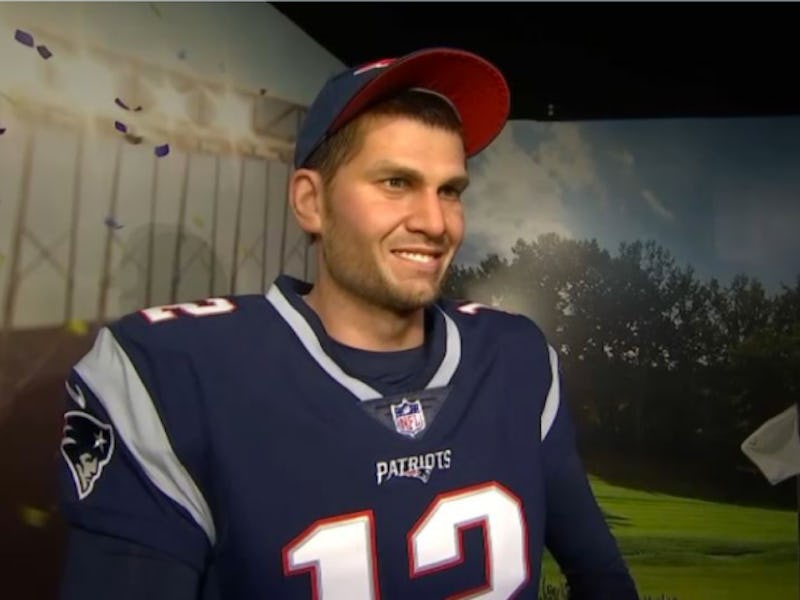Boston’s Dreamland Wax Museum boasts a collection that includes all 45 presidents and an assortment of celebrities, but it’s really the statue of Tom Brady that steals the show — and not in the way he’d want. The wax rendering of the six-foot-four New England Patriots quarterback looks off, and people are noticing. Not only are headlines calling Wax Brady inaccurate; sports media outlets are calling him downright creepy.
Dreamland has issued an open letter to Brady, asking him to “come by and sit in for a measurement session” in order to make Wax Brady less creepy looking. He hasn’t responded yet, but there’s a lot they could learn from psychologists who study the science of being creepy.
When you look at Wax Brady, the overwhelming feeling of creepiness you feel stems from seeing something that looks human but is not quite human enough. This phenomenon is called the “uncanny valley,” and it was developed by Japanese roboticist Masahiro Mori in the 1970s, who noticed that people felt unsettled — that is, creeped out — when they saw robots that looked somewhat human. This also happens with human-like images in video games and movies. As the humanoid image or figure approaches a fully human-like appearance, it makes people more and more uncomfortable until it reflects a 100 percent human representation.
Of course, this feeling is not a response to only humanoid objects. According to researchers from Knox College in Illinois, human faces with ambiguous expressions can elicit the same feelings because our brains are hardwired to identify whether things are hostile or friendly. Not being able to decipher that with our eyes freaks us out. In their study, published in the journal New Ideas in Psychology in 2016, they surveyed 1341 people about the various scenarios and people that creeped them out. The participants reported being creeped out by people and situations in which they couldn’t figure out the level of threat, like meeting a stranger who wanted to take a picture of your friend, or a person kept touching your friend; people with unusual patterns of behavior or strange emotional responses were also considered creepy. Are these people actually predatory, or are they behaving innocently? That ambiguity, the researchers argued, is what makes people feel uneasy. They believed that the human “creepiness detector” is activated when a potential threat is considered unpredictable.
Masahiro Mori's theory of the uncanny valley explains why people are so creeped out by humanoid looking things.
Wax Brady’s creepiness perfectly illustrates their point. On the whole, he’s visually ambiguous, appearing human but not quite; his face, in partcular, has an eerie, indecipherable expression.
When they fix Wax Brady, his sculptors may want to really focus on Brady’s eyes, as they are what expresses the most emotion. Recent research has suggested that soulless-looking eyes can also trigger sensations of creepiness.
Of course, if they were willing to be creepy themselves, they could just find a way to make a mold of Tom Brady’s face and affix it to Wax Brady, rendering the possibility of ambiguity nearly moot. Regardless of how they fix him, making tweaks to Wax Brady may take a long time. According to a post on the Dreamland Wax Museum Facebook page, the average wax figure takes over 200 measurements and 50 days.
Luckily, Wax Brady’s looks are nowhere near as bad as those of Courtroom Brady, whose sketch during the investigation of the “Deflategate” scandal in 2015 turned the notoriously handsome quarterback into a creature more closely resembling Tolkien’s Gollum.
